
Chorus A to Z
Working as part of the Chorus of the Finnish National Opera is demanding but hugely rewarding. Our opera singers Salla Leponiemi and Simo Mäkinen shine a light on their profession in the A to Z of the Chorus of the FNO – it’s all very tongue in cheek, of course.
A = Alto
A choral score has four separate sections based on the singers’ voice types: soprano, alto, tenor and bass. Each of these is again divided in two according to vocal ranges. Alto is the lower female section of the chorus. In a female choral score, the altos create the background, while in a mixed one they balance between the high and low voices to give the sound depth and softness. Suitable vocal ranges for alto singers are mezzo-soprano and alto.
B = Bass
Bass is the lower male section of the chorus, providing the foundation of the soundscape. Bass singers are often likened to teddy bears, not only thanks to their low voices but also because of their stereotypically easy-going personalities. No one’s ever found out whether this is because chilled out individuals like to sing low parts or because a low voice makes an individual more chilled out.
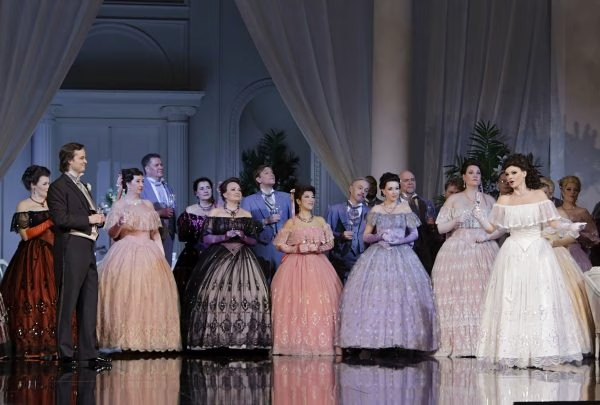
C= Co-operation
Co-operation is a prerequisite for a successful performance. This is particularly true for a chorus, in which everything from music to acting is about trust in your peers. A good team atmosphere and peer support can save the worst of days, and over the years colleagues turn into the best of friends, singing brothers and sisters. That’s lucky, as we chorus singers must spend hours on end huddled together –we literally can’t escape each other.
D = Don Giovanni
Don Giovanni is a prime example of an opera in which choral sections are few and far between. During a Don Giovanni performance, chorus singers can go to the gym or sauna, knit socks, study, or watch Netflix. It’s also common, of course, to use the time for solo practice. Whatever you get up to, you must be mentally ready to get back to work. This makes it impossible to relax, even if the next choral section is an entire hour away. You can never, ever, arrive late on the stage.

E = Encore
Encores, repeat performances of the same piece, are usually reserved for soloists, and even they are rarely allowed the privilege. Sometimes, however, you might get a chorus so magnificent that it can’t be denied this unique honour. In 2001, for example, the MET chorus performed an encore of Verdi’s classic Va Pensiero from Nabucco. Dreams do come true.
F = First night magic
Even though opera singers often have years of experience and performances have become routine, the magic and exhilaration of the premiere never fade. The first night of any production is always the highlight, which crystallises months of hard work into a few intense hours. The rehearsals are over, and the performance finally takes flight.
G = Glamour
When you sing in the Chorus of the FNO, glitz and glamour become an everyday thing. In fact, a night off on the sofa may seem more glamourous than a spectacular performance. Even if you get used to the dazzling costumes and opulent surroundings, the work still has its moments of glory. Those happen when the audience is thrilled by a performance and you can sense it all the way from the stage.

H = Hydration
Dry throat is an opera singer’s nightmare, so sufficient hydration is a must. Water has to be always at hand, especially if the production involves lots of movement around the stage. If there’s sand, hay or some other vocal cord-drying elements on the stage, we actually need a humidifier onstage – otherwise we can’t do our job.
I = Improvisation
The singer of an opera chorus must be able to improvise. Directors trust the chorus, and their instructions for what we should do on stage are usually quite ambiguous. Regular work can mean, for example, playing courtiers at a ball or farmers working their fields.
J = Joy
The sheer joy of making music together is hard to beat. That tingle when you hit the high notes in perfect harmony is matched only by the sight of an applauding crowd’s smiling faces. Now that’s a joy worth singing about.
K = Keeping up appearances
Sometimes a singer blanks in the middle of a performance. It happens to everyone. In a chorus, no one but your immediate neighbour might notice it, and the moment of panic quickly turns into a funny anecdote. When you do blank, the most important rule is to keep up appearances. You must fool everyone into believing you’re on top of things and singing at the top of your lungs.
L = Learning by heart
Working in the opera chorus requires every singer to learn tons of lyrics and music by heart. Every singer has their own way of doing this. Learning words comes easier for some, some are expert at picking up melodies, while others grasp the big picture from the events on stage. Of course, the learning process also depends on what else is going on in your life. If you have several new scores to master, all in foreign languages, one of them might be particularly tough to memorise. You can’t rely on knowing the language either, as librettos have surprising filler words that you’d never hear in a conversation.
M = Maintenance
The six-day working week of a chorus singer covers a broad and varied repertoire. Sufficient vocal care and maintenance is therefore a must. This includes giving and taking singing lessons, sleep, rest and silence, as well as physical exercise and solo practice. Chorus rehearsals involve no shared sessions for warming up the voice, meaning that everyone looks after their own instrument.
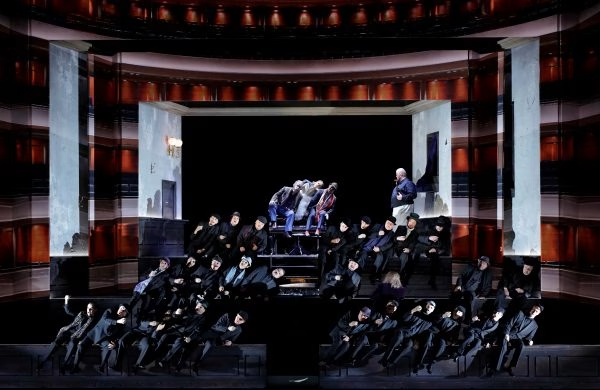
N = Nerves
As an opera chorus singer, you’re on stage so often that pre-performance nerves become a thing of the past. Experience gives you confidence, and in a chorus you’re always part of a large group. Sometimes you have to sing solo or substitute for a soloist who is off sick, and that’s when you still get nervous. The adrenaline fills you with positive energy, however, forcing you to focus and improving your performance. In the end, nerves make the job more exciting.
O = Opera
O is for opera, the brightest cultural jewel of the Western art world. Besides providing unforgettable experiences, opera also maintains traditions dating from hundreds of years ago, which are all too often ignored in contemporary culture. These can be as small as the way a glass is held or the hem of a skirt is lifted. Tradition helps us understand where we come from and who we are.

P = Pianissimo
Pianissimo means singing very quietly. A lot of famous choral scenes are known for their bombastically booming soundscape, but it’s the pianissimos that really get under your skin. The Chorus of the FNO is the only chorus in Finland that has the scale and skills to magic up a pianissimo that fills the entire auditorium.
Q = Queasiness
Q is for queasiness. The choir may look as serene as angels on stage, but don’t be fooled. There are times when the lights or the heat or just an oncoming cold make singing a tougher challenge that usual. We’re meant to watch the conductor’s every move, but sometimes it’s us moving instead, swaying from side to side to relieve the queasiness in our stomach.
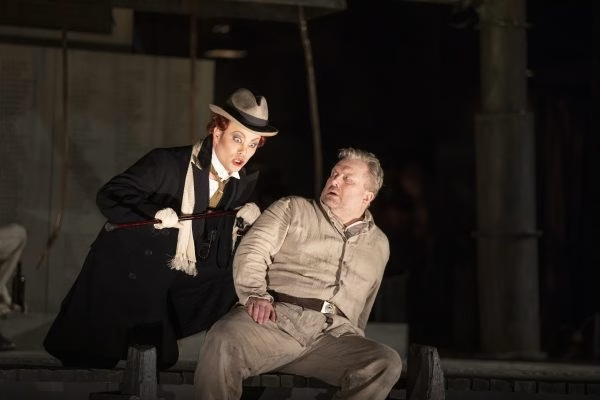
R = Respiratory infection
A respiratory infection is a singer’s worst nightmare, as it means working is out of the question. When you get a cold, you stay home, take medication and cast healing spells to try to get better without infecting your colleagues. The medicine cupboard must always be fully stocked, with everything from paracetamol to zinc spray, vitamins and a nasal cleansing pot.
S = Soprano
Soprano is the high female section of the chorus, which often sings the melody. People typically imagine that singers’ personalities match their vocal range, so high-voiced sopranos are traditionally seen as girly. As a result, they tend to play girls, while the lower-singing altos play their mothers.
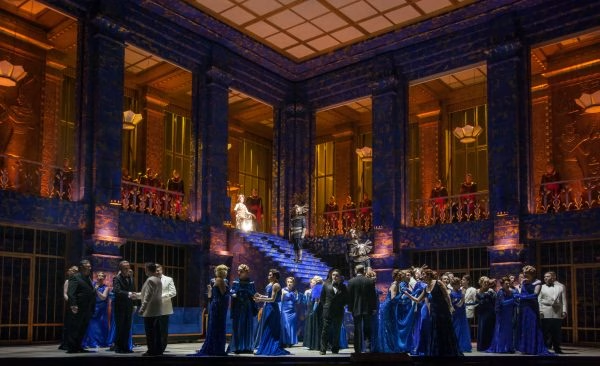
T = Tenor
Tenors, those with a high male voice type, like to believe that their score is the best of the chorus. Other chorus singers, however, ensure they never stand in front of a tenor with big lungs on the stage. The high tenor sections are often so hard and taxing to sing that they resemble a good workout.
U = Unison
Singing in unison means that all the voices of the choir combine at the same pitch. When all the singers keep the beat, match vowels, and articulate consonants in perfect sync, it provokes enormous waves of both sound and emotion. The risks are enormous, however, as you only need one person to get it wrong.
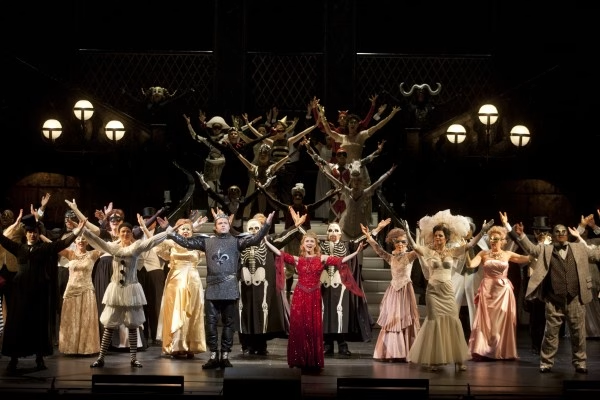
V = Vampires and zombies
When you think about an opera chorus, you’re likely to think of dazzling ball gowns and royal parties rather than vampires and zombies. The latter, however, are surprisingly common in opera. Chorus singers have also been known to play stockbrokers, commoners, soldiers, girls, drunkards, sailors, prostitutes, hotel managers, conspirators, nuns, and villagers.
W = Wagner
Richard Wagner’s great opera classics represent some of the most magnificent music out there. They are holistic works of art full of fantastic feats for singers, which require impressive physical fitness and the mastery of difficult vocal styles. Their extended melodic motifs and sustained high sections are particularly challenging.
X = Xylophone
The xylophone an essential instrument in Anvil Chorus, an iconic choral scene from Verdi’s Il Trovatore. The chorus sings to the rhythm of gypsies banging hammers onstage, so we all keep our ears peeled for the percussion. If you think you don’t know the tune, you’re probably wrong!

Y = Yoga
Incredibly, research has shown that singing in a chorus is as good for you as yoga. A team at Sweden’s University of Gothenburg asked a group of 18-year-olds to perform three choral exercises – monotone humming, singing a well-known hymn and chanting a slow mantra – while heart rhythm was monitored. It proved that songs with long phrases have the same healthy effect as breathing exercises in yoga. Now you know why we all look so zen on stage.
Z = Zitti, Zitti chorus
The Zitti, Zitti choral section in Rigoletto is rhythmically precise and relentlessly detailed. The singers stand far away from the conductor and each other, so keeping in rhythm requires immense concentration. Sometimes the chorus simply can’t see the conductor, and on those occasions it’s absolutely essential to have full trust in your peers.

Text TUIKE LEHKO
Translation of text INK TANK MEDIA
Photos HEIKKI TUULI, STEFAN BREMER and SAKARI VIIKA





